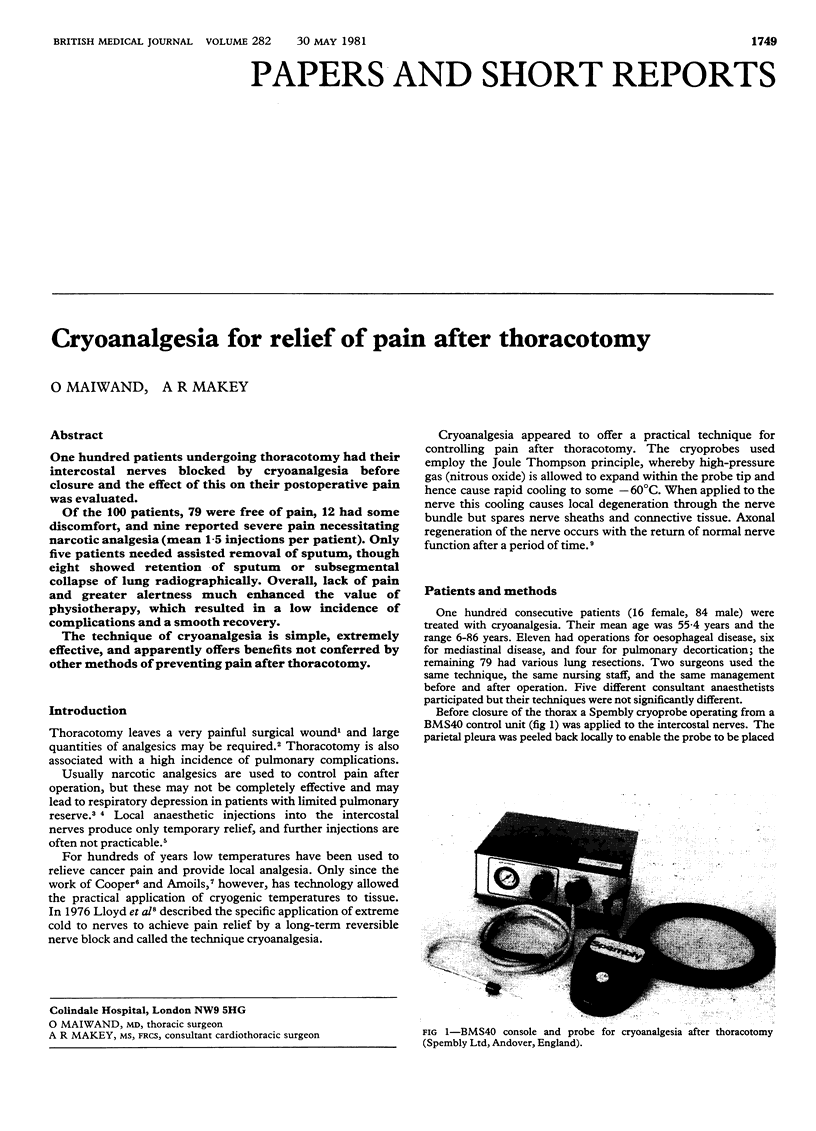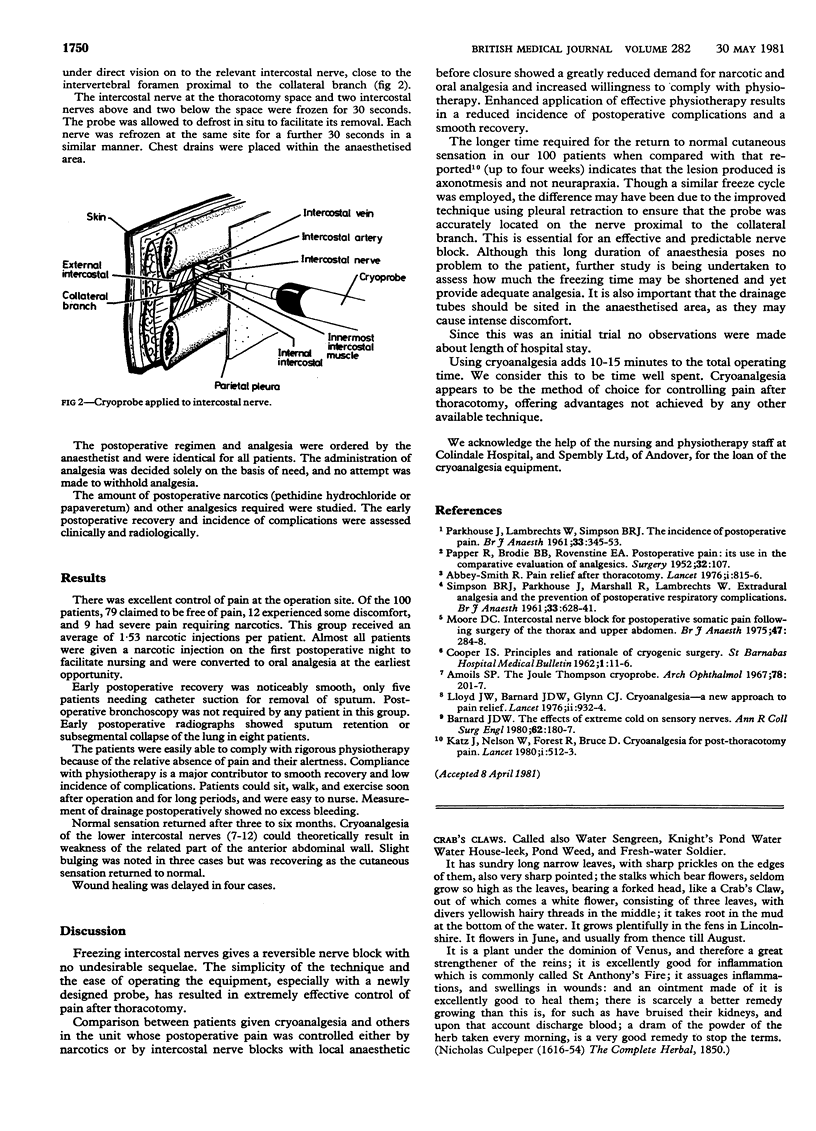Abstract
One hundred patients undergoing thoracotomy had their intercostal nerves blocked by cryoanalgesia before closure and the effect of this on their postoperative pain was evaluated. Of the 100 patients, 79 were free of pain, 12 had some discomfort, and nine reported severe pain necessitating narcotic analgesia (mean 1.5 injections per patient). Only five patients needed assisted removal of sputum, though eight showed retention of sputum or subsegmental collapse of lung radiographically. Overall, lack of pain and greater alertness much enhanced the value of physiotherapy, which resulted in a low incidence of complications and a smooth recovery. The technique of cryoanalgesia is simple, extremely effective, and apparently offers benefits not conferred by other methods of preventing pain after thoracotomy.
Full text
PDF

Images in this article
Selected References
These references are in PubMed. This may not be the complete list of references from this article.
- Amoils S. P. The Joule Thomson cryoprobe. Arch Ophthalmol. 1967 Aug;78(2):201–207. doi: 10.1001/archopht.1967.00980030203014. [DOI] [PubMed] [Google Scholar]
- Barnard D. The effects of extreme cold on sensory nerves. Ann R Coll Surg Engl. 1980 May;62(3):180–187. [PMC free article] [PubMed] [Google Scholar]
- COOPER I. S., GRISSMAN F., JOHNSTON R. A complete system for cytogenic surgery. St Barnabas Hosp Med Bull. 1962;1:11–16. [PubMed] [Google Scholar]
- Katz J., Nelson W., Forest R., Bruce D. L. Cryoanalgesia for post-thoracotomy pain. Lancet. 1980 Mar 8;1(8167):512–513. doi: 10.1016/s0140-6736(80)92766-x. [DOI] [PubMed] [Google Scholar]
- Lloyd J. W., Barnard J. D., Glynn C. J. Cryoanalgesia. A new approach to pain relief. Lancet. 1976 Oct 30;2(7992):932–934. doi: 10.1016/s0140-6736(76)90893-x. [DOI] [PubMed] [Google Scholar]
- Moore D. C. Intercostal nerve block for postoperative somatic pain following surgery of thorax and upper abdomen. Br J Anaesth. 1975 Feb;47 Suppl:284–286. [PubMed] [Google Scholar]
- PAPPER E. M., BRODIE B. B., ROVENSTINE E. A. Postoperative pain; its use in the comparative evaluation of analgesics. Surgery. 1952 Jul;32(1):107–109. [PubMed] [Google Scholar]
- PARKHOUSE J., LAMBRECHTS W., SIMPSON B. R. The incidence of postoperative pain. Br J Anaesth. 1961 Jul;33:345–353. doi: 10.1093/bja/33.7.345. [DOI] [PubMed] [Google Scholar]
- SIMPSON B. R., PARKHOUSE J., MARSHALL R., LAMBRECHTS W. Extradural analgesia and the prevention of postoperative respiratory complications. Br J Anaesth. 1961 Dec;33:628–641. doi: 10.1093/bja/33.12.628. [DOI] [PubMed] [Google Scholar]
- Smith R. A. Letter: Pain relief after thoracotomy. Lancet. 1976 Apr 10;1(7963):815–816. doi: 10.1016/s0140-6736(76)91667-6. [DOI] [PubMed] [Google Scholar]



